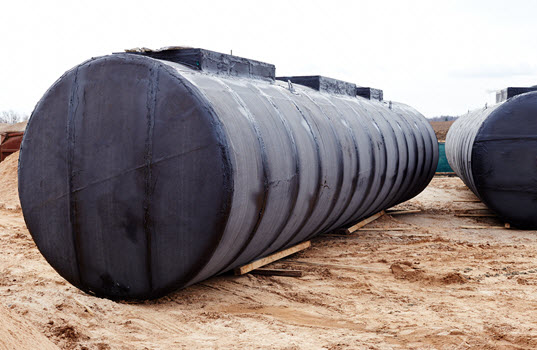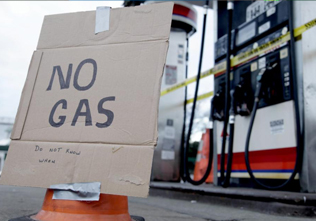It was 1988 when the world of retail fueling in the United States changed forever—and for the better.
That’s when the U.S. Environmental Protection Agency (EPA)—in response to the shocking revelation that thousands of underground storage tanks (USTs) were leaking petroleum products and contaminating groundwater supplies—introduced a program, which included technical compliance standards that more stringently regulated USTs containing petroleum or other hazardous materials.
Basically, those regulations set operating requirements and standards pertaining to tank design and installation, leak detection, spill and overfill control, corrosion protection, corrective actions and tank closure.
Those landmark regulations—with a few tweaks by the EPA regarding leak detection, training, required inspections and compliance reporting tied into the Energy Policy Act of 2005—resulted in a massive cleanup of leaking USTs and served the industry extremely well for nearly 30 years, or until 2015. That’s when the EPA announced the first major changes to its UST regulations since the Reagan administration, all of which will have a profound effect on how the owners and operators of retail fueling sites will conduct their businesses going forward.
What You Need to Know
The most important thing to know is, by October 13, 2018—a date that seems to be in the distant future, but in the world of regulatory compliance is actually just around the corner—all fueling sites must either be in compliance with the EPA’s new regulations, or have produced written proposals showing how they plan to eventually come into compliance.
So, what’s new? The most overarching aspect of the new UST regulations is that there will now be a set of national standards with which every fueling site must be in compliance. In the past, while there were national standards established, many states had their own individual UST compliance standards, which superseded the national regulations.
The new national standards will also bring those fueling sites located on Indian lands, which had been autonomous in the past and subject only to tribal regulations, under the national compliance umbrella.
Here are some of the major new regulations that will become law next year:
- Spill bucket testing will be required every three years, unless the UST system is outfitted with double-wall spill buckets where the interstitial space is tested regularly. Some states, such as California and Maryland, already require spill bucket testing every year.
- Sump and under-dispenser containment systems must be tested every three years if the system uses interstitial monitoring of the piping as its main form of leak deterrence.
- Testing must be done within 30 days after the repair of any component in the spill protection, overfill containment and secondary containment areas of the UST system, regardless of whether or not an actual product release occurred.
- Overfill prevention equipment inspections will be required every three years, except in states like Mississippi, where they are required annually.
Essentially, these new testing regimes will help ensure that all spill buckets, overfill devices and secondary containment systems are tested on a regular basis, and that they are installed and working properly. Also, they will ensure that secondary containment systems relying on sump sensors as a way of testing for piping leaks are operating effectively.
One part of the updated UST regulations that will receive emphasis is the ABC Operator Program. This training program was part of the Energy Policy Act of 2005, but its enforcement will become stricter under the new regulations. The program was designed to verify that a significant number of employees at a fueling site have completed some level of state or third-party training, and have been certified to work at a location featuring USTs for retail fuel storage and dispensing.
Based on the amount of training completed, employees will receive one of three certification designations:
- Class A: Have primary responsibility to operate and maintain the UST system and typically manage resources and personnel to achieve and maintain compliance. Training for Class A operators should give the operator the ability to make informed decisions regarding compliance with regulatory requirements.
- Class B: Have daily responsibility for on-site operation and maintenance of UST systems. Training for Class B operators should provide an in-depth understanding of the operation and maintenance aspects of the UST system.
- Class C: Daily on-site employees who are generally the first line of response to events that may be emergency conditions. Training should allow the Class C operator to take appropriate action in response to UST-related emergencies or alarms that are caused by spills or releases from a UST system.
No matter the level of certification an employee has achieved in the ABC Operator Program, all must be able to perform and document monthly walk-through inspections of the UST system to guarantee all sumps, spill buckets and secondary containment areas are dry.
What You Can Do
Realizing the importance of the EPA’s new UST regulations, and the consequences that can result if they are not met or followed, operators must be proactive in making sure their sites are up to code by the October 13, 2018, compliance deadline. This means operators may have to identify and work with outside service providers that possess the expertise, experience and compliance systems that have been specifically designed to help fueling sites come into compliance with the new regulations.
Most crucially, all fueling site operators should take advantage of the ABC Operator Program by having, if possible, at least one A-level, one B-level and two C-level certified employees on-site at all times. To make this happen, many compliance service providers will work with third-party training agencies to make sure all retail site employees achieve at least some level of certification in the ABC Operator Program.
Aside from that, the best compliance service programs will offer clients a dedicated account manager who can guide site operators through what can often be a complicated process, including advanced electronic notification of expiring documents, daily electronic notification of compliance deficiencies, detailed compliance reporting, online compliance tools and management reporting.
The Road to Compliance
The revelations of 1988 were an obvious shock to the retail fueling system. In response, fuel site operators—driven by the EPA’s strict UST regulations—dug in and cleaned up their sites, ultimately producing a safer fueling process. In 2018, three decades since the implementation of those landmark UST regulations, retail fuelers are again being asked to do what’s best for their customers and the environment.
The new regulations that will go into effect in late 2018 are an extension of those that changed the fueling industry in 1988, and they are a logical next step in ensuring that the fuel storage processes and systems at retail sites reach even higher levels of safety. However, that will only be possible if site operators take the necessary strides to make sure that new testing, training and inspection regulations are met.
By working with a company able to guide them through the regulation and compliance minefield, retailers will help guarantee that their operations are not dogged by fines or, in the ultimate worst-case scenario, marked for closure.
Source- Fuel Marketer News








